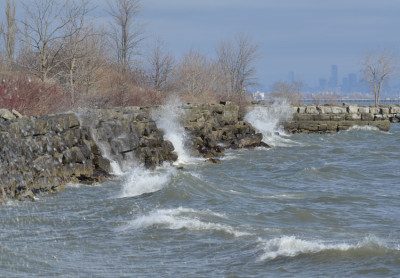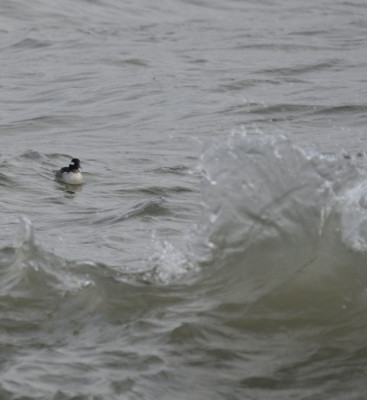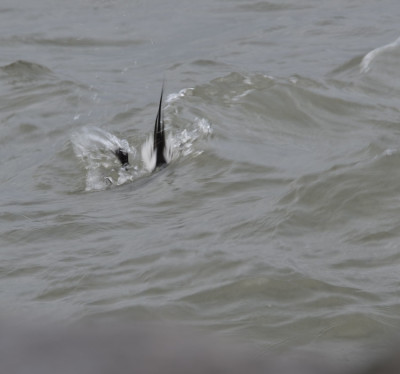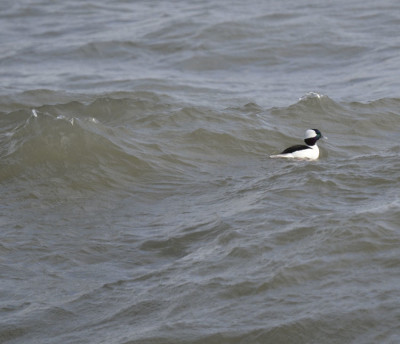One January afternoon, I went for a windswept walk along Lake Ontario at J.C. Saddington Park in Mississauga. Big swells were rolling in and breaking on the blocks of limestone meant to reduce erosion. The spray was landing up to 3 metres (10 feet) further inland. And some diving ducks were bravely hunting right in the blast zone.
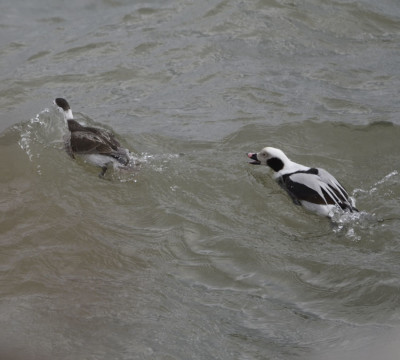
Long-tailed ducks body surfing.
How Did the Ducks Avoid Being Battered on the Rocks?
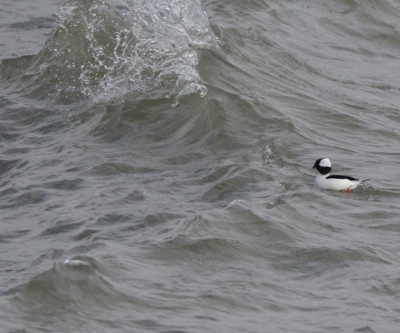
Bufflehead male bobbing on top of the waves.
Frankly, I thought some of the ducks nearest to the breakwater rocks were suicidal. When one of the big waves broke ashore, it actually caused a low resonant boom like distant thunder.
The conflicting currents caused by incoming swells and retreating whitecaps made for strange peaks and valleys that would suddenly move en masse forward and into the limestone.
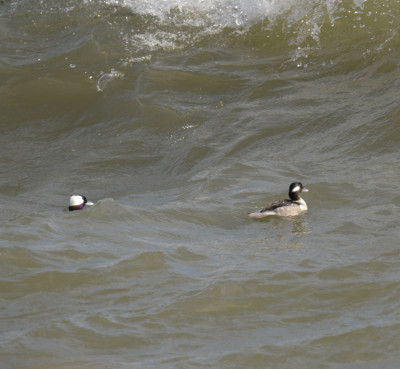
The male Bufflehead is in a trough.
Some of the smaller ducks, like the Bufflehead, dealt with the danger by swimming back out towards the Lake when they felt too close.
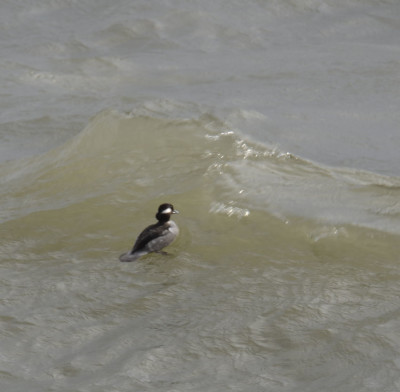
Notice that this Bufflehead has spread its tail for stability.
They rode the swells like pieces of dandelion fuzz.
Other ducks, particularly the larger long-tailed ducks, would try to ride the waves. But 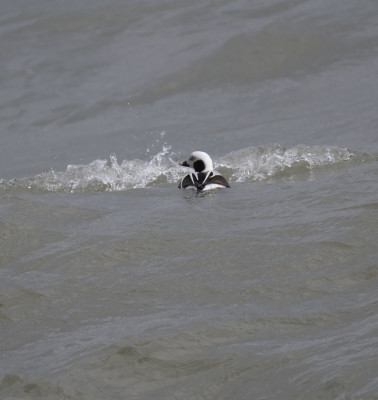
if they were in danger of getting buried under a foaming white cap crest, they would dive right through the wall of the building wave.
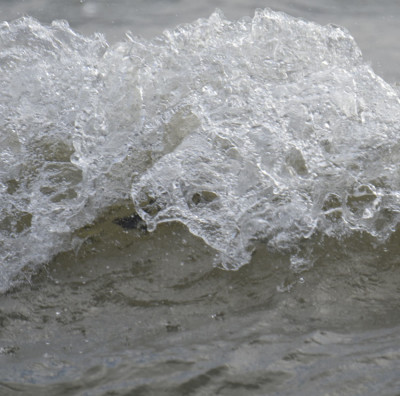
There’s a duck just below that white foam if you look.
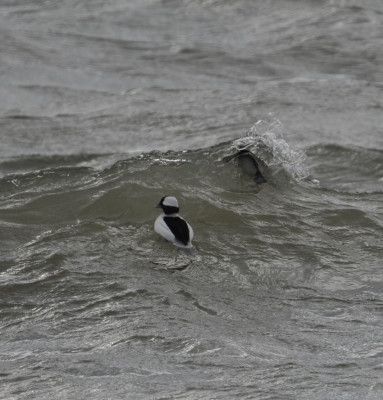
Even the Bufflehead dove sometimes.
I have no way of knowing if any one duck made a fatal error in judgment and ended up broken on the rocks. I sure hope not, though!
Watching the ducks diving for food, probably zebra mussels, in these huge rolling swells made an entertaining afternoon.
Related Reading
- Redhead Ducks Gleam in Rare Winter Sunshine
- What Ducks Have a Red Head, Black Chest but White Sides and a Long Sloping Narrow Bill?
- Long Tailed Ducks Flip Their Feathers
- Surf Scoters at Sam Smith
Join In
Have you ever wondered why ducks like to live dangerously? Please share your views with a comment.

